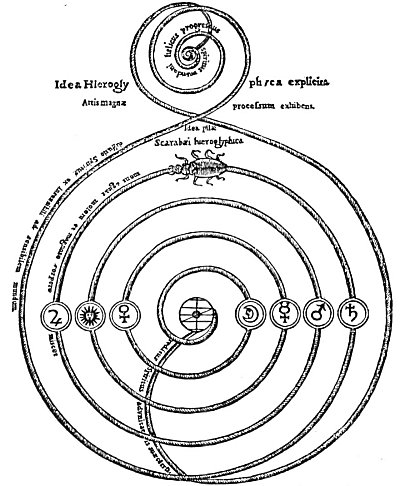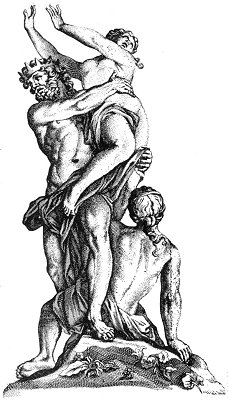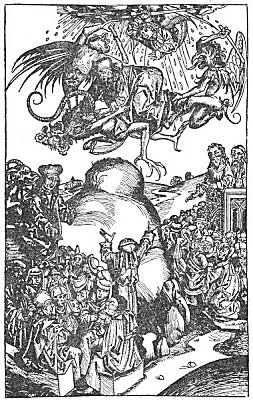The great rapidity of motion manifested by lizards has caused them to be associated with Mercury, the Messenger of the Gods, whose winged feet traveled infinite distances almost instantaneously. A point which must not be overlooked in connection with reptiles in symbolism is clearly brought out by the eminent scholar, Dr. H. E. Santee, in his Anatomy of the Brain and Spinal Cord: “In reptiles there are two pineal bodies, an anterior and a posterior, of which the posterior remains undeveloped but the anterior forms a rudimentary, cyclopean eye. In the Hatteria, a New Zealand lizard, it projects through the parietal foramen and presents an imperfect lens and retina and, in its long stalk, nerve fibers.”
Crocodiles were regarded by the Egyptians both as symbols of Typhon and emblems of the Supreme Deity, of the latter because while under water the crocodile is capable of seeing–Plutarch asserts–though its eyes are covered by a thin membrane. The Egyptians declared that no matter how far away the crocodile laid its eggs, the Nile would reach up to them in its next inundation, this reptile being endowed with a mysterious sense capable of making known the extent of the flood months before it took place. There were two kinds of crocodiles. The larger and more ferocious was hated by the Egyptians, for they likened it to the nature of Typhon, their destroying demon. Typhon waited to devour all who failed to pass the judgment of the Dead, which rite took place in the Hall of Justice between the earth and the Elysian Fields. Anthony Todd Thomson thus describes the good treatment accorded the smaller and tamer crocodiles, which the Egyptians accepted as personifications of good: “They were fed daily and occasionally had mulled wine poured down their throats. Their ears were ornamented with rings of gold and precious stones, and their forefeet adorned with bracelets.”
To the Chinese the turtle was a symbol of longevity. At a temple in Singapore a number of sacred turtles are kept, their age recorded by carvings on their shells. The American Indians use the ridge down the back of the turtle shell as a symbol of the Great Divide between life and death. The turtle is a symbol of wisdom because it retires into itself and is its own protection. It is also a phallic symbol, as its relation to long life would signify. The Hindus symbolized the universe as being supported on the backs of four great elephants who, in turn, are standing upon an immense turtle which is crawling continually through chaos.
The Egyptian sphinx, the Greek centaur, and the Assyrian man-bull have much in common. All are composite creatures combining human and animal members; in the Mysteries all signify the composite nature of man and subtly refer to the hierarchies of celestial beings that have charge of the destiny of mankind. These hierarchies are the twelve holy animalsnow known as constellations–star groups which are merely symbols of impersonal spiritual impulses. Chiron, the centaur, teaching the sons of men, symbolizes the intelligences of the constellation of Sagittarius, who were the custodians of the secret doctrine while (geocentrically) the sun was passing through the sign of Gemini. The five-footed Assyrian man-bull with the wings of an eagle and the head of a man is a reminder that the invisible nature of man has the wings of a god, the head of a man, and the body of a beast. The same concept was expressed through the sphinx–that armed guardian of the Mysteries who, crouching at the gate of the temple, denied entrance to the profane. Thus placed between man and his divine possibilities, the sphinx also represented the secret doctrine itself. Children’s fairy stories abound with descriptions of symbolic monsters, for nearly all such tales are based upon the ancient mystic folklore.
THE URÆUS.
From Kircher’s Œdipus Ægyptiacus. The spinal cord was symbolized by a snake, and the serpent coiled upon the foreheads of the Egyptian initiates represented the Divine Fire which had crawled serpentlike up the Tree of Life.
GOOD AND EVIL CONTENDING FOR THE UNIVERSAL EGG.
From Maurice’s Indian Antiquities. Both Mithras, the Persian Redeemer, and Serapis, the Egyptian God of the Earth, are symbolized by serpents coiled about their bodies. This remarkable drawing shows the good and evil principles of Persia–Ahura-Mazda and Ahriman–contending for the Egg of the Earth, which each trying to wrench from the teeth of the other.

Moe is the founder of GnosticWarrior.com. He is a father, husband, author, martial arts black belt, and an expert in Gnosticism, the occult, and esotericism.

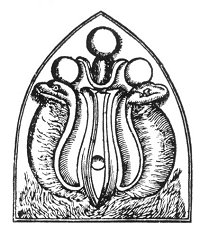
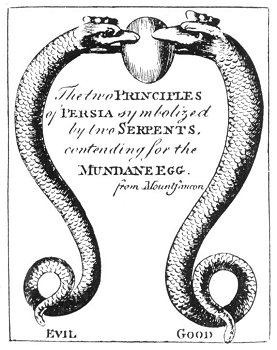
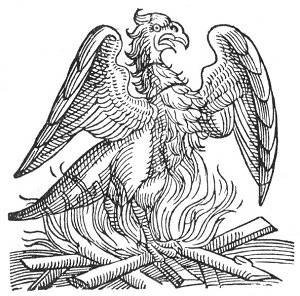
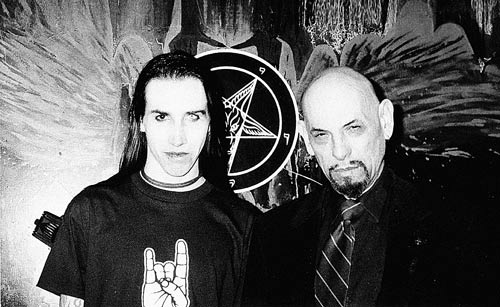


![How a little boy, dying in the same monastery, called upon a virgin that was to follow him; and how another nun, at the point of leaving her body, saw some small part of the future glory [675 A. D.?] | Book 4 | Chapter 8 How a little boy, dying in the same monastery, called upon a virgin that was to follow him; and how another nun, at the point of leaving her body, saw some small part of the future glory [675 A. D.?] | Book 4 | Chapter 8](https://www.gnosticwarrior.com/wp-content/plugins/contextual-related-posts/default.png)
